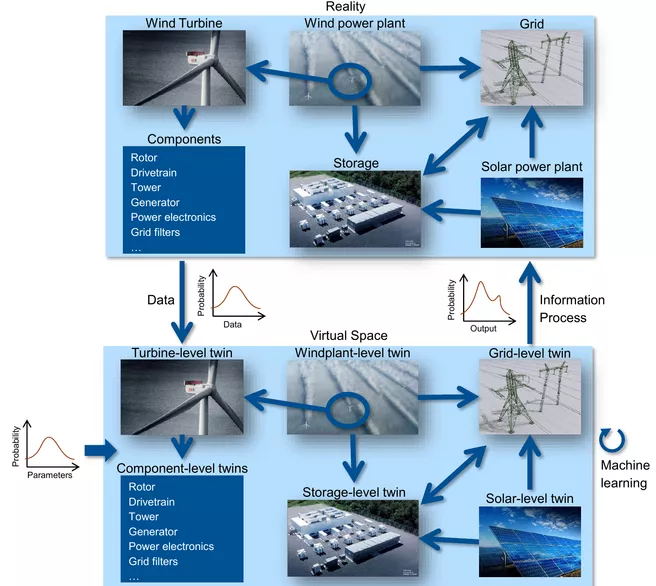Digital twins will allow to enhance functionality, safety/security and reliability of the future energy system across all system and integration levels such as generation, distribution, conversion, storage and consumption. The goals of current research are design, implementation, application and demonstration of a holistic software platform and system theoretical methods to support the holistic application of digital twins to the future energy system, taking into account scalability, modularity, extensibility and conversion to large trans-regional systems.
The schematic figure shows the concept for parts of the electrical energy system. Each system level is equipped with individual digital twins which are fed by data measured in realtime and in the system level‘s time resolution and exchange crucial information between each other and with reality. The interconnected digital twins are self-learning agents using e.g. adaptive and/or model-based methods or machine-learning techniques and are implemented distributed on the respective real-time system. To exploit the full features of these interconnected digital twins on the different system levels and to enhance the behaviour of the future energy system, a holistic software platform with adequate communication interface(s) is designed and implemented. It will allow for communication, data exchange, analytics & processing and multi-level consistency (e.g. synchronicity by time stamps). This platform is also the basis for the featured services such as e.g. UQ, statistics, monitoring (e.g. condition monitoring and/or fault-detection), security and machine learning.
